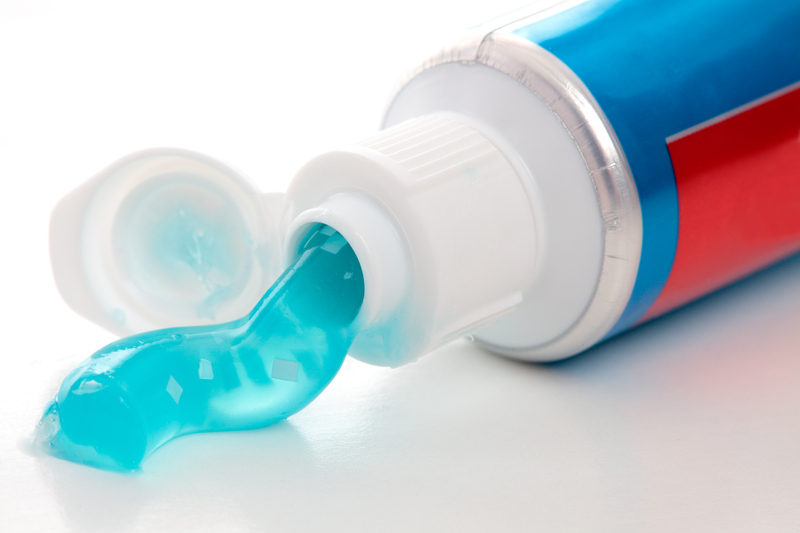Your Ultimate Guide to Cleansing Window Sill Mould
Posted on 13/09/2025
Your Ultimate Guide to Cleansing Window Sill Mould
Mould on your window sill is not just an unsightly problem; it can also pose health risks and lead to further damage in your home if left untreated. Window sill mould is common in households due to persistent condensation, humidity, or water leaks. In this comprehensive guide, we'll walk you through everything you need to know about identifying, removing, and preventing window mould so your home can remain fresh, clean, and safe.

Table of Contents
- Why Does Mould Grow on Window Sills?
- Health Risks Associated with Window Mould
- Identifying Mould on Your Window Sill
- Essential Tools and Supplies for Mould Removal
- Safe and Effective Methods for Cleansing Window Sill Mould
- Natural vs. Chemical Mould Removers
- Step-by-Step Cleaning Guide
- Preventing Mould Regrowth on Window Sills
- When to Seek Professional Help
- Frequently Asked Questions
Why Does Mould Grow on Window Sills?
Understanding why mould develops on window sills is essential for both treating and preventing future occurrences. Mould thrives in environments with:
- High humidity
- Poor ventilation
- Condensation
- Frequent temperature changes
- Water leaks or intrusions
Health Risks Associated with Window Mould
Mould isn't just an aesthetic or structural concern--it's a serious health hazard. Common symptoms associated with mould exposure include:
- Respiratory issues and allergies
- Asthma attacks
- Eye, nose, and throat irritation
- Skin rashes
- Headaches and fatigue
Identifying Mould on Your Window Sill
How do you know if that dark patch on your window sill is mould? Window-sill mould often appears as small, fuzzy spots or patches in colors such as:
- Black
- Dark green
- Gray
- Brown
- White (sometimes powdery)
Essential Tools and Supplies for Mould Removal
Before you get to work, make sure you have the right tools to clean window sill mould safely and efficiently:
- Protective gloves (nitrile or rubber)
- Protective goggles and an N95 mask
- Old clothes
- Plastic sheeting or old towels for protecting nearby surfaces
- Soft-bristled brush or old toothbrush
- Microfiber or disposable cloths
- Spray bottle
- Bucket of warm, soapy water
- Mould removal solution - see next section for options
- Bin bags (for disposal)
Natural vs. Chemical Mould Removers
When it comes to cleansing window sill mould, you have two major options: natural remedies and commercial chemical cleaners.
Popular Natural Mould Cleaners
- White vinegar: Undiluted vinegar can kill around 82% of mould species. Pour into a spray bottle, spritz on the affected area, let sit for 1 hour, then scrub.
- Baking soda: Mix with water or vinegar to form a paste for deeper cleaning power.
- Hydrogen peroxide (3%): Spray on, let bubble for 10-15 minutes, then scrub and wipe.
- Lemon juice: Its acid can help break down mould but is less effective on severe issues.
- Tea tree oil: Mix 1 teaspoon with 1 cup water and apply to the mouldy window sill. Anti-fungal and non-toxic (but keep away from pets and children).
Chemical Mould Cleaners
- Store-bought mould sprays: Check instructions for use on wood, uPVC, or painted surfaces.
- Diluted bleach (1:10): Effective for non-porous window sills, but may damage or discolor wood and paint. Ensure good ventilation!
Tip: Always test cleaning solutions on a small, inconspicuous area first. Wear your PPE and ventilate the room.
Safe and Effective Methods for Cleansing Window Sill Mould
Let's walk through the exact process for removing window sill mould. Whether you're using a natural or chemical product, the essential steps are the same, just tailored to your particular solution and window sill material.
Step-by-Step Cleaning Guide: How to Clean Mould from Window Sills
1. Prepare Your Area and Supplies
- Wear gloves, goggles, and a mask.
- Open windows or use a fan for ventilation.
- Lay down plastic or towels to catch any drips or spills.
- Remove curtains, blinds, or any objects from the area.
2. Remove Surface Mould Carefully
- Spray your cleaning solution directly on the mouldy patches. Thoroughly saturate the area.
- Let the solution sit for the recommended time (usually 10-60 minutes; check product instructions).
- Use a soft brush or old toothbrush to gently scrub the mould. For stubborn spots, reapply solution and repeat.
3. Wipe Down and Rinse
- With clean, damp cloths, wipe away mould residue and excess cleaner.
- For porous wood window sills, avoid soaking them - use a minimal amount of water.
- Dispose of used cloths and gloves in sealed bin bags.
4. Dry the Area Thoroughly
- Use a clean, dry towel or paper towels to absorb moisture from the window sill.
- Leave the window open or use a fan to speed up the drying process.
5. Inspect and Repeat If Needed
- Double-check for any remaining spots a few hours after cleaning.
- Repeat as necessary; stubborn or deep-rooted mould may require additional applications.
6. Finish With a Preventive Spray
- Once the area is dry, apply a light mist of vinegar or a mould-barrier spray.
Special Case: Cleaning Mould from Wooden Window Sills
Wood is more delicate and can trap moisture, which worsens mould problems:
- Never oversaturate wooden sills when cleaning.
- Wipe in the direction of the grain.
- Consider sanding down the surface gently if the mould has penetrated deeply (refinish if necessary).
Preventing Mould Regrowth on Window Sills
After your window frame mould removal, don't let all your hard work go to waste. Follow these preventative practices to keep your window area mould-free:
- Improve ventilation: Open windows regularly; use trickle vents if available.
- Use a dehumidifier: Reduce indoor humidity to below 60%.
- Wipe condensation daily: Use a dry cloth to remove water droplets on windows and sills.
- Fix leaks immediately: Check for cracks or leaks around windows, frames, or caulking.
- Insulate and draught-proof: Proper insulation minimizes condensation build-up.
- Keep the area clean: Regularly dust and wipe the window sill with a vinegar-water solution.
Tip: Avoid drying clothes indoors and keep houseplants away from windows if mould is a recurring problem.
When to Seek Professional Help
While DIY window sill mould removal works for most minor cases, call in a professional if:
- The mould covers more than 1 square metre of surface.
- It keeps returning even after thorough cleaning.
- You suspect mould inside the walls or window structure.
- Family members experience persistent symptoms.
Frequently Asked Questions About Window Sill Mould Cleaning
-
Is window sill mould dangerous?
Yes. Even small amounts can contribute to poor indoor air quality, allergies, and respiratory issues. Address the problem quickly, especially if you have children or vulnerable adults at home. -
What is the best cleaning product for window sill mould?
White vinegar, hydrogen peroxide, or store-bought mould removers are generally effective. Bleach should be used cautiously--mainly for non-porous sills. -
Can I paint over window sill mould?
No. Painting over mould will not stop it from growing underneath and can cause paint to peel or bubble. Always clean and treat the problem first. -
Why does mould keep coming back on my window sill?
Recurring mould is usually a sign of ongoing moisture problems--such as inadequate ventilation, leaks, or chronic condensation. Fix the root cause for lasting results. -
Is black mould on window sills the most dangerous?
Black mould (Stachybotrys chartarum) is associated with more severe health risks, but all mould should be treated as potentially harmful and removed promptly. -
How often should I check my window sills for mould?
Inspect your window areas at least monthly, especially during wet or humid seasons.

Final Thoughts: Keep Your Home Mould-Free and Fresh
Tackling window sill mould may seem daunting, but with the right tools and this ultimate guide, you're now ready to restore your windows to their original beauty and safeguard your family's health. Regular maintenance, vigilant moisture control, and prompt cleaning will ensure your window sills remain clean, bright, and mould-free for years to come.
Need more advice on tackling household mould, or have stubborn stains and odours? Check out our other cleaning guides and share your experiences with window mould removal in the comments below!


